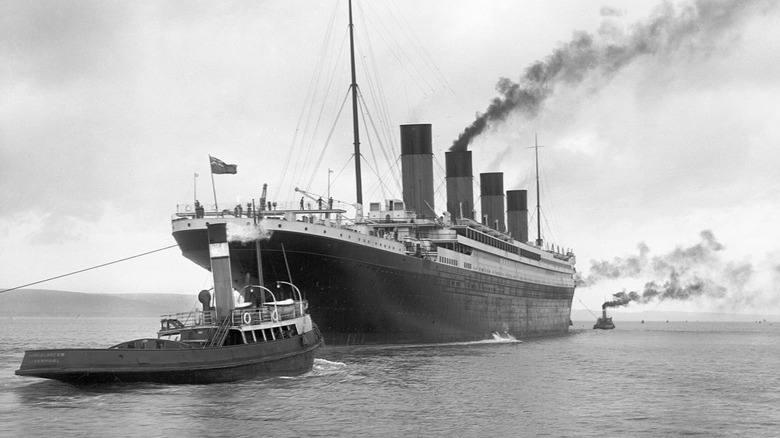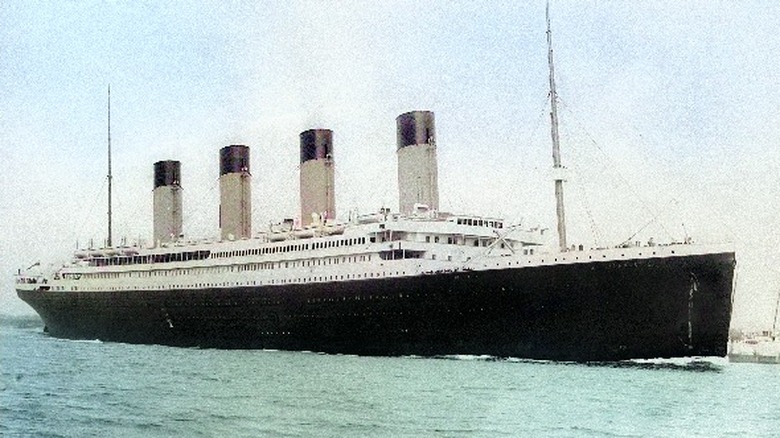What Did The Titanic Look Like In Color?
The Titanic is probably the most famous ship to ever set sail (via Microsoft News). It has inspired works of art and fiction and served as a centerpiece for museums and sites dedicated to the preservation of history. Given the eerie foreshadowing nature of some works that seemed to predict the ill-fated ship's future (via Business Insider), one might even say that the world was captivated by the Titanic before it was ever built.
That initial preoccupation gave way to utter fascination when the unthinkable happened. This ship that was believed to be unsinkable sunk, tossing countless lives and valuable artifacts into an unforgiving sea. Many of them would never be seen or heard from again.
The luxury ocean liner, a true titan weighing in at 52,000 tons (via Britannica), struck an iceberg and caused the most infamous collision to take place on open water. Approximately 1,500 passengers went down with the ship, their memories forever emboldened in pop culture. Another marvel not to be forgotten is the ship itself, which was once only available for viewing via antique black and white photography. Today, thanks to modern editing software, we are able to gaze at one of the most shocking scenes in history, and learn what it might have looked like in color.
The Titanic was impressive, no matter what photos you see
As it turns out, the ship's outer casing is dark in hue. The vessel, when displayed in color, shows a purplish-charcoal hue, which grants a much clearer view of the portholes. From bow to stern, this 175-foot spectacle (via Washington Post) exudes a realistic, three-dimensional feel when colorized. Finite digital details reveal one smooth white stripe circling the top of the ship. Funnels the color of sunrise release billowing clouds of smoke into a crystal-blue sky.
History Daily offers Titanic enthusiasts a monochromatic glimpse into the ship's interior as well. The Café Parisien brings vintage elegance when the tabletops are adorned in interchangeable colors of blush and green. With bedrooms painted crimson red and smoking rooms with mosaic patterns on the floor, history buffs can get a next-level view of 1920's aristocracy through this new digital project.

